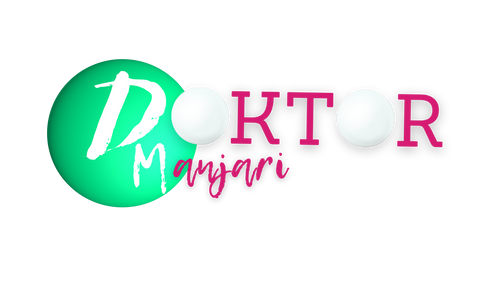🌍 Introduction
In a world dominated by sedentary lifestyles and digital dependence, physical activity remains the single most powerful natural medicine for preventing and reversing numerous chronic diseases. Walking and regular exercise have been consistently linked to longer life spans, better mood, improved immunity, and reduced risk of heart disease, diabetes, cancer, and cognitive decline.
⚕️ Scientific and Medical Evidence
1. Cardiovascular Health
The American Heart Association (AHA, 2023) reports that brisk walking for 30 minutes daily reduces the risk of heart disease and stroke by 35–40%. Regular aerobic exercise improves circulation, strengthens the heart, and lowers LDL cholesterol.
2. Metabolic and Hormonal Benefits
According to the Journal of Clinical Endocrinology & Metabolism (2022), consistent exercise improves insulin sensitivity, reduces visceral fat, and boosts metabolism—helping control Type 2 diabetes and obesity.
3. Brain and Mental Health
Walking increases blood flow to the brain and promotes neurogenesis (new brain cell growth). Harvard Medical School (2021) found regular aerobic exercise lowers depression and Alzheimer’s risk by up to 35%.
4. Musculoskeletal and Bone Health
The National Institute on Aging (NIA) states older adults who engage in moderate physical activity have 40% fewer falls and fractures, due to stronger muscles and better balance.
5. Longevity and Immunity
A BMJ (2020) study with 44,000 participants found walking 8,000–10,000 steps daily lowers mortality risk by up to 60%.
💪 Types of Exercise & Best Fit by Age Group
| Age Group | Recommended Exercise | Focus Area | Notes |
|---|---|---|---|
| Children (6–17 yrs) | Running, cycling, swimming, outdoor games | Bone & muscle development | At least 1 hour/day of active play |
| Young Adults (18–35 yrs) | Strength training, HIIT, yoga, sports | Muscle mass, stamina, stress control | 45–60 mins, 5 days/week |
| Middle Age (36–55 yrs) | Brisk walking, jogging, cycling, resistance training | Cardiovascular health, metabolism | Include 2 days/week of strength training |
| Older Adults (56+ yrs) | Walking, stretching, yoga, Tai Chi, light weights | Balance, flexibility, bone strength | Avoid high-impact or jerky movements |
⏰ Best Time to Exercise
| Time | Benefits | Best For |
|---|---|---|
| Morning (6–8 AM) | Boosts metabolism, improves focus | Professionals, students |
| Evening (5–7 PM) | Muscles are warmer → better performance | Office-goers, fitness enthusiasts |
| Any time (Consistency) | Regularity matters more than timing | Everyone |
✅ Do’s and Don’ts of Exercising
✅ Do’s
- Warm-up and cool-down for 5–10 minutes.
- Hydrate well before and after exercise.
- Wear proper footwear and comfortable clothing.
- Maintain correct posture and breathing.
- Combine cardio, strength, and flexibility training.
- Listen to your body and rest when needed.
- Track progress (steps, stamina, heart rate).
❌ Don’ts
- Don’t overtrain or skip rest days.
- Don’t exercise right after meals.
- Don’t ignore warning signs like pain or dizziness.
- Don’t compare your fitness journey with others.
🧘♀️ Final Word
Walking and exercise are daily medicines for body and mind. They regulate hormones, boost mood, enhance immunity, and slow aging. As Dr. Kenneth Cooper said, “Exercise is a journey, not a destination. It must be continued for the rest of your life.”
📚 References
- American Heart Association, Circulation Journal, 2023.
- Stanford K. et al., Journal of Clinical Endocrinology & Metabolism, 2022.
- Harvard Health Publishing, Exercise and the Brain, 2021.
- National Institute on Aging, Physical Activity Guidelines, 2021.
- Paluch AE et al., BMJ, 2020.
- World Health Organization, Global Action Plan on Physical Activity, 2023.
📘 Glossary
| Aerobic Exercise | Continuous rhythmic movement of large muscle groups to improve cardiovascular fitness (e.g., walking, cycling). |
| Resistance Exercise | Muscle activity against an external force (e.g., weights, bands, or body weight). |
| Flexibility Training | Stretching or yoga to increase joint mobility and reduce stiffness. |
| Balance Training | Exercises improving stability and coordination (e.g., Tai Chi). |
| Visceral Fat | Fat around abdominal organs linked to higher disease risk. |
| Insulin Sensitivity | Body’s response to insulin; improved by regular activity. |
| Neurogenesis | Creation of new brain cells stimulated by physical activity. |
| Sedentary Behavior | Long periods of inactivity (sitting or screen time). |
| Endorphins | “Feel-good” hormones released during exercise. |
| Talk Test | Measure of intensity — moderate if you can talk, not sing; vigorous if you can’t say more than a few words. |
| Tai Chi | A gentle martial art focused on slow, deliberate movements that improve balance, coordination, and mental calm. |
| HIIT (High-Intensity Interval Training) | Short bursts of intense activity alternated with rest periods to rapidly improve endurance and burn calories efficiently. |

